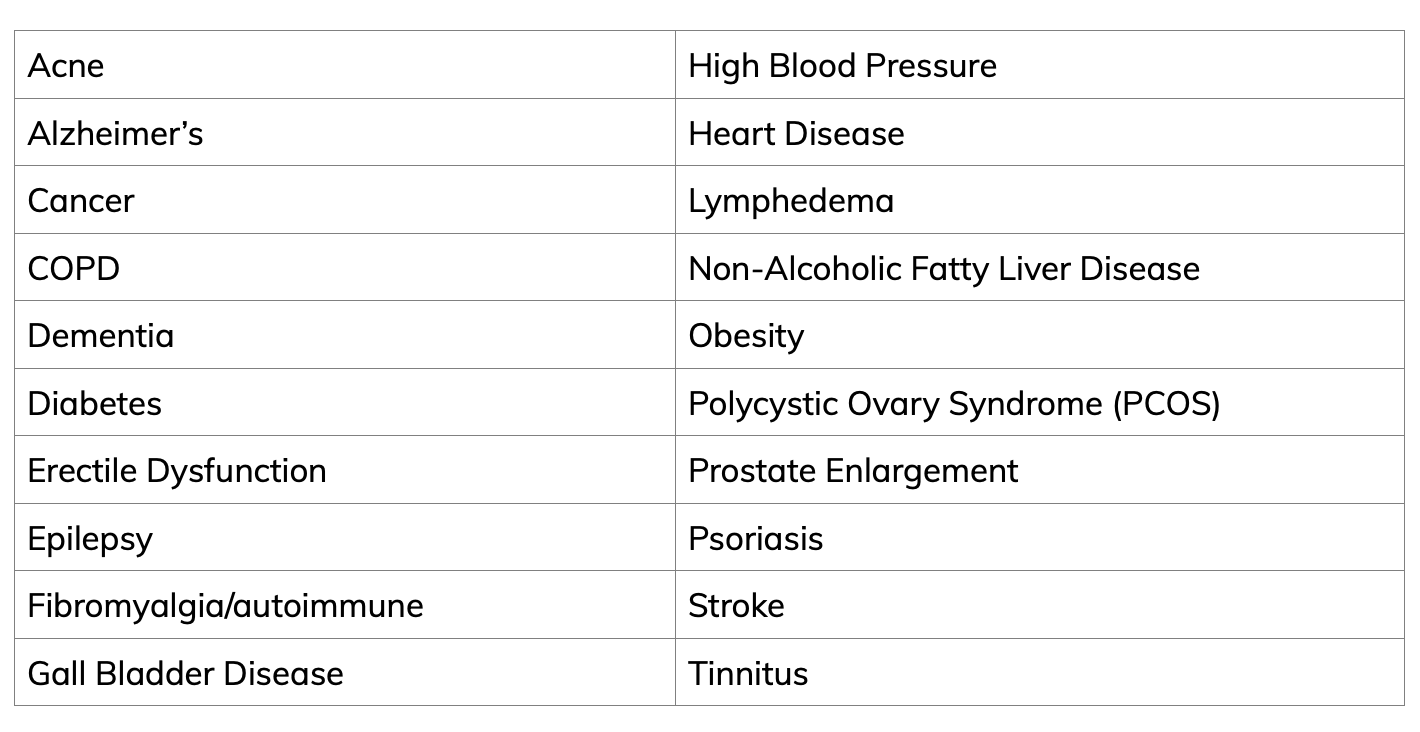Grabbing Jello
In December, I emailed people close to me a video of my friend, Hannah Warren, talking with Dhru Purohit on his podcast (Episode #453).
Hannah described using metabolic therapies, including a ketogenic diet, as her sole treatment to achieve complete remission from neurometabolic dysfunction (diagnosis: Bipolar I).
I find Hannah’s story breathtaking because of the near miss of her losing her quality of life, and because of the extraordinary hope it offers anyone experiencing neuropsychiatric symptoms.
My friend Frank said it sounded like ‘grabbing jello’.
I get it. Let’s break it down.
If ‘jello’ is metabolic health, what is metabolic dysfunction – and why should we care?
It involves insulin resistance and is evidenced by belly fat, visceral fat, slightly elevated fasting blood glucose, high blood pressure, high triglycerides, low HDL, and, to use Dr. Georgia Ede’s language, can ‘instigate or aggravate’:
According to Dr. Ede, neurometabolic dysfunction occurs when the brain cannot properly utilize glucose. Despite the presence of energy, brain cells starve and, therefore, malfunction. Add to the list:
Dr. Chris Palmer, psychiatrist, and Dr. Matthew Phillips, neurologist, have each discovered that within malfunctioning cells are mitochondria damaged by inflammation and oxidative stress. This is unbelievably good news: cells can be fueled, mitochondria can be healed.
We can grab that jello! But how?
Metabolic Interventions repair insulin sensitivity and lipid levels and minimize inflammation and oxidative stress. The strongest among them is the ketogenic diet.
There is still much to learn about ketones. But we know this: ketosis mimics fasting. Fasting mimics sleep. Sleep is when our bodies heal and repair.
While not everyone requires a ketogenic diet to regain metabolic health, for many, it is an indispensable first step.
These additional interventions calibrate our intricate biology by supporting quality sleep and digestion (think of this list as a menu of options):
Viewing sunrise and sunset directly, not through glass
Getting plenty of full spectrum sunlight directly on eyes and skin
Grounding: contact with the earth or trees
Eating and digesting outside, when possible
Meditation, journaling, therapy, somatic work, etc
Heavy physical work
Satisfying mental work
Heat/cold exposure
Managing blue light exposure – excessive blue light can wreck the cortisol cycle, and therefore the sleep cycle – causing trouble no matter what else you’re doing
Eliminating toxic food, substances, medications
Community, social connection, and purpose
Reiterating what Hannah explained to Dhru, I shared this with Frank. Having committed to many of the same habits years ago when he lost his dad to heart disease, he got it.
Metabolic health is foundational to total health. We’re in the midst of a metabolic health crisis.
We can turn it around.
We can do so much on our own, but we need our tax dollars and our institutions to work for us, not against us.
Here’s how you can help make that happen:
Hannah Warren serves as the Mental Health Communications and Advocacy Manager for The Baszucki Group and Metabolic Mind, a powerhouse behind research investigating the role of metabolism in mental illness.



